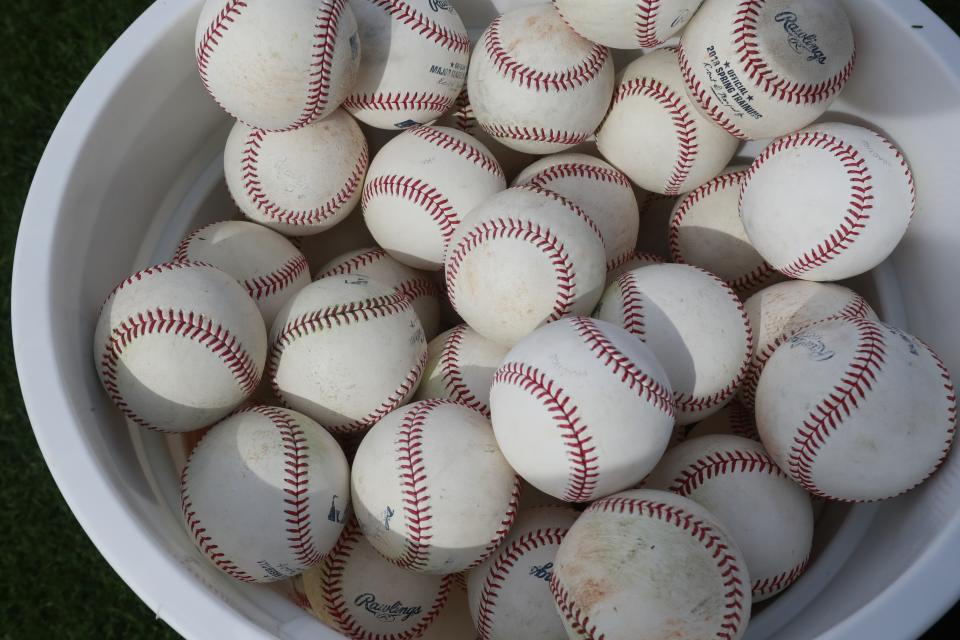MLB thinks storing baseballs in air-conditioned rooms will help fix the home run surge

In the record books of baseball, the 2017 season will be remembered as the year of the home run. There were 6,104 home runs hit in 2017, overtaking the previous record of 5,693 home runs, set in 2000. And while that’s alarming (as it was completely unexpected), it was also a heck of a lot of fun — because home runs are fun and exciting.
[Batter up: Join a Yahoo Fantasy Baseball league for free today]
Major League Baseball is trying to remove all that new fun — whoops, I mean MLB is trying to combat that home run surge, and we know what the first fix will be. According to Tom Verducci of Sports Illustrated, MLB will require every team to store all of their baseballs in an air-conditioned enclosed room. Verducci didn’t give any details on what the exact parameters of these rooms will be, but there will be a sensor installed in every room which will keep track of the temperature and humidity.
The data from those sensors will be used to decide if every team should be using a humidor to store their baseballs in the future, which would control the humidity. The Colorado Rockies, who play in the thin, dry mountain air of Denver, have used a humidor since 2002 to try and limit the effects of the air on the baseballs. Dry air makes them harder to grip and livelier off the bat, which is why even with the humidor, you still see a lot of home runs in Denver. The Arizona Diamondbacks play in dry desert air, and they’re using a humidor for the first time in 2018. If MLB discovers that humidity is an issue, we could see more of them in 2019, especially if the air-conditioned rooms don’t have the desired chilling effect (sorry) on MLB’s home run numbers.
Regardless of the purpose of this new mandate, it’s not a bad idea to standardize how baseballs are stored. MLB goes through more than a quarter of a million baseballs every year, and they’re stored in a variety of rooms, temperatures, and humidities throughout MLB. If all the baseballs are stored in the same conditions, at least that aspect of the balls will be the same no matter where a game takes place.
But at the same time, controlling the temperature of the balls won’t fix one of the issues that pitchers complained about last season: lowered seams. And while it might help the issue of tighter winding (another issue that pitchers mentioned), it doesn’t really address why pitchers were complaining about any of this in the first place. Those complaints are about actual physical differences in the ball, differences which have been cataloged, researched, and tested extensively by Rob Arthur of FiveThirtyEight and Ben Lindbergh of The Ringer. An air conditioner won’t fix the seam location on a baseball.
Commissioner Rob Manfred told Verducci that MLB’s study on the composition, storage, and handling of baseballs is still ongoing. We have no idea if those results will be released to the public in full. But it doesn’t exactly inspire confidence that MLB’s first move to “fix” the baseballs has nothing to do with the issues pitchers complained about in 2017. However, though air-conditioned rooms don’t deal with those physical issues, it’s at least something. It might not reverse the entire home run trend, but does anyone really want *all* those new home runs to just dissapear? Well, aside from pitchers, of course.
More MLB coverage from Yahoo Sports:
– – – – – –
Liz Roscher is a writer for Yahoo Sports. Have a tip? Email her at lizroscher@yahoo.com or follow her on twitter! Follow @lizroscher

 Yahoo Sports
Yahoo Sports 
